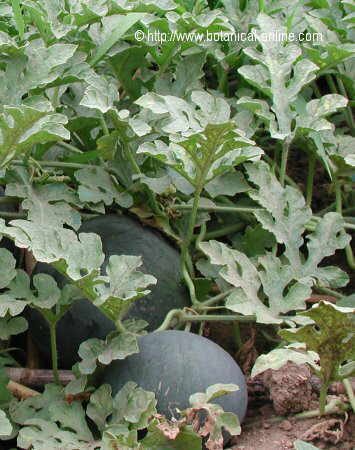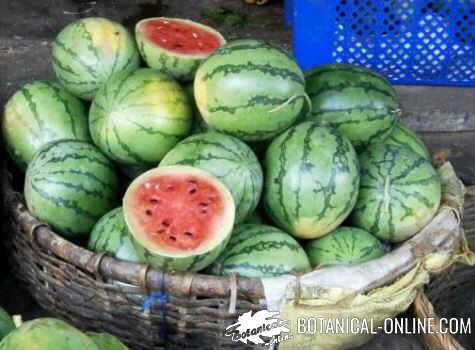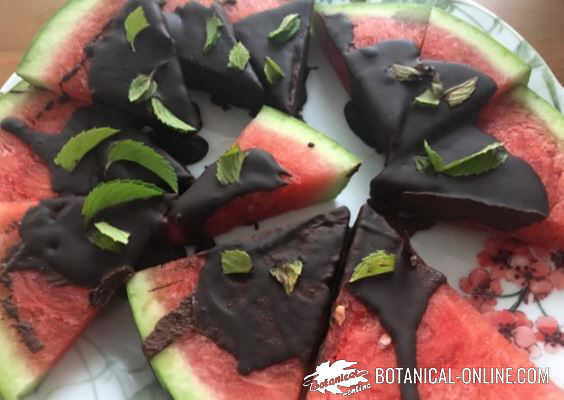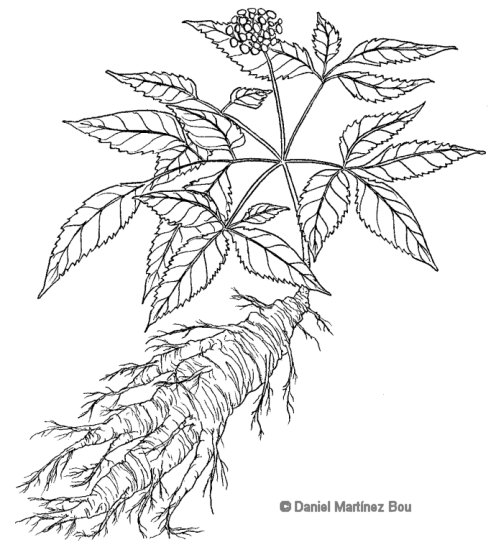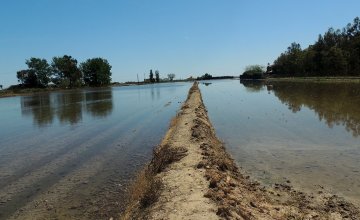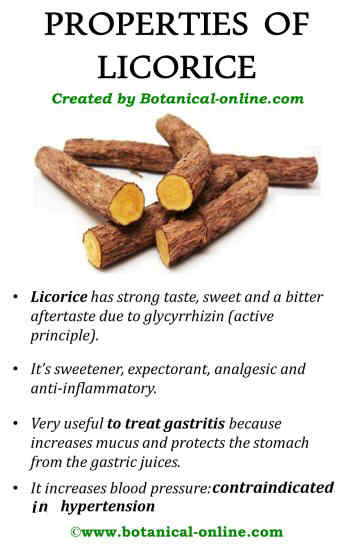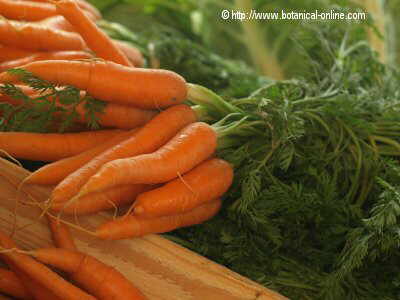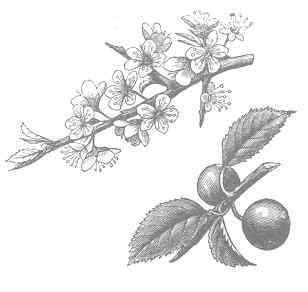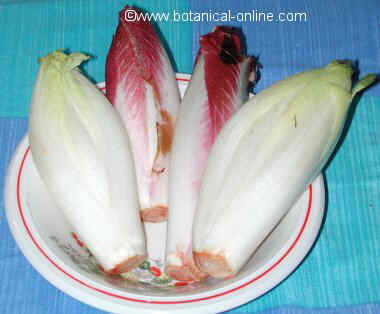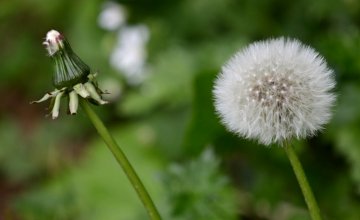Contents
- 1 What is a watermelon plant?
- 1.1 Characteristics of watermelon (Citrullus vulgaris)
- 1.2 Description of watermelon plant
- 1.3 History of watermelons
- 1.4 Origin of watermelon
- 1.5 Wild and cultivated watermelons
- 1.6 Varieties and classes of watermelons
- 1.7 What are seedless watermelons?
- 1.8 How are seedless watermelons produced?
- 1.9 Advantages of seedless watermelons
- 1.10 Watermelon production in the world
What is a watermelon plant?
Characteristics of watermelon (Citrullus vulgaris)
Watermelons (Citrullus vulgaris), like melons (Cucumis melo), belong to the Cucurbitaceae family, an extended family where we find other edible plants, such as squash, zucchini, cucumbers and other toxic plants as the squirting cucumber.
Watermelon plant with some fruits |
Description of watermelon plant
Watermelons are annual trailing plants up to 4 m. Stems covered with hairs, 1 cm in diameter, with woody tendrils.
Leaves up to 20 cm wide by 15 cm long, sessile, hairy on the underside, pinnato-lobulate.
Solitary yellow flowers up to 4 cm in diameter. These are in the same plant, but there are some fully male or fully female (monoecious flowers), although there may be rare cases of hermaphroditism.
Large edible fruits (watermelon) up to 80 cm in length, roughly spherical or ovoid, smooth, green uniform or with darker bands.
Watermelons can weigh up to 20 kg, while their average weight is about 2.5 kg. Pulp red, yellow or pink. Black seeds. Melons are summer fruits.
History of watermelons
The origin of watermelons is in Africa where they are highly valued and used as a source of liquid in dry seasons when water availability is low.
Many ancient cultures had this fruit as a convenient means to transport water from one place to another. In the Kalahari Desert, it is a plant that grows wild, being considered as the main water resource for both the man and the animals.
The fact that it grows in dry tropical regions is clearly evident in its roots that have adapted perfectly to this type of weather. Like many desert plants, it has shallow roots (40 to 50 cm) but rather extend along the ground (almost 1 m of stem), allowing them to quickly absorb the surface moisture or water fall. (See plant adaptations)
Origin of watermelon
Watermelons in a market |
Apparently, it was precisely in the Kalahari Desert where this species originated as David Livingston discovered in his trip to North Africa.
From this point, it was spreading throughout Africa, because settlers transported its fruits and seeds across Africa. From there, it was exported to Europe, Asia and America.
Wild and cultivated watermelons
Wild watermelons differ in size and taste from their cultivated relatives. They are small and round and they taste very bitter, so that people who are accustomed to the taste of the varieties derived from them would not be able to eat them. Man slowly transformed this taste by means of selection.
It first appears as a cultivated plant in Egypt about 5000 ago. It was along all Bank of the Nile where most watermelons were cultivated in antiquity.
In the tenth century, it was introduced in China where it reached a popularity so great that, even today, it is a social custom to gift watermelons for major events. Today, it is grown in many parts of the world.
Varieties and classes of watermelons
The main species of watermelon are the following:
WATERMELONS WITH SEEDS(diploid varieties). They are older varieties with greater weight ranging from 8 to 15 kg. Some have a spherical shape, other more elongate. Among them we can mention the following.
ELONGATED WATERMELONS: They are are elongated and heavy watermelons with seeds. Among them we have:
– Klondine: An elongated watermelon (which is commonly known as Melona), one of the most sweet. It is bright red. The bark is often quite strong, light green with darker bands. Typically weighing between 9 and 15 kilos.
– Jubilee: Another kind of Melona. Its crust is thicker. Pulp pinkish-red. Between 10 and 15 kg.
– Party: It’s one of the sweetest Melonas variety because of its high sugar content. Bark dark green with lighter bands. Between 9 and 11 kg.
ROUND WATERMELONS : They are round watermelons with seeds. Among them, we can mention:
– Crimson Sweet: yellow with green stripes. Very sweet.
– Abrusen: It is the most used watermelon. Typically bright red with dark green round shell. Among these Sugar Baby stands out.
– Ananas: It differs from the typical watermelon by the yellow color of its meat. Its bark is light green with darker stripes. Unlike most watermelons, it has little sugar, giving it a very bland taste.
SEEDLESS WATERMELONS: (triploid varieties):
What are seedless watermelons?
Seedless watermelons are obtained from special seeds. These seeds are produced by crossing a normal watermelon (diploid watermelon = a melon with a normal number of chromosomes) with a tetraploid watermelon (four times normal chromosomes).
How are seedless watermelons produced?
A tetraploid watermelon is obtained by treating a watermelon with colchicine, a drug obtained from autumn crocus, a very toxic plant of the Liliaceae family.
The seeds obtained by crossing these specimens require a more complex production technology making them more expensive. Plants grown from these seeds, when pollinated with pollen from normal plants, produce sterile specimens containing not fully developed seeds, very rudimentary and very soft, as those of cucumbers, so they can be eaten.
Advantages of seedless watermelons
Watermelon pizza with peppermint and chocolate. See recipe |
They respond to a growing market interest in obtaining seedless varieties that are easier to eat, and, at the same time, they usually have a smaller size so they can be more easily stored in the fridge or eat at one meal.
Another advantage of seedless watermelons is that they have a longer duration since watermelons with seeds usually begin to rot before starting precisely with the meat that is in contact with the seeds. Seedless watermelons are also known as “personal melon”. Their weight can vary between 1,300 kg to 3 kg.
Since this type of watermelons do not have to devote efforts to develop their seeds, they usually have more sugars in the pulp and the plant is generally stronger and bigger.
Of all the many varieties of seedless watermelons we can point out the following:
– Alena: from Israel, it is very sweet and has a weight between 2 and 3 kg.
– Yellow: Rounded, yellow flesh, weighing between 5 and 6 kg.
– Butterball: Melona with yellow flesh, between 6.8 and 8 kg. Its bark is very resistant and ideal for outdoor transportation.
– Crimsom trio: Red seedless melona, strong, weighing between 6 and 10 kilos.
– Tiffany: Melona red seedless strong weighing between 6 and 10 kilos.
Other widely used varieties of watermelons are: The Queen of Hearts, Sweet Marvel, Crisby, Conqueror, Seedless, Blue Belle, Africa, Black Kleckley, Angeleno, Baby Gray, Jack, Blackstone, Georgia, Queen of Cuba, the Delta Queen, Genesis, etc
Watermelon production in the world
Watermelon is grown almost everywhere in the world with a a warm and rainy climate. Among the major producing countries are: China, Turkey, Iran and the United States. China produces almost all watermelons for their own market. In Europe most of watermelons are imported from Turkey.
![]() More information on watermelon
More information on watermelon

